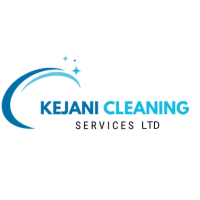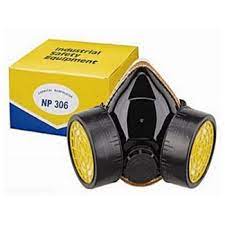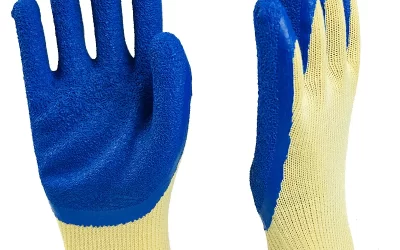Working at heights—whether on rooftops, ladders, scaffolds, towers, or construction sites—is one of the most hazardous tasks in many industries. Falls from height are among the leading causes of workplace injuries and fatalities.
To mitigate these risks, Personal Protective Equipment (PPE) plays a critical role in ensuring worker safety. But not all PPE is created equal, and specific environments demand specific equipment.
In this guide, we explore:
-
The types of PPE required when working at heights
-
How each item works
-
Best practices for using PPE at height
-
Kenyan regulations and workplace safety standards
Why PPE for Working at Heights Is Critical
Falls from even a few meters can cause serious injury or death. PPE doesn’t just provide a barrier—it can save a life. It is designed to:
-
Prevent falls (active fall prevention)
-
Reduce the severity of injuries from falls (fall arrest)
-
Protect the head and body from falling objects or impact
Using the correct PPE reduces liability, improves compliance, and most importantly, protects human life.
🔹 Essential PPE for Working at Heights
1. Full-Body Safety Harness
-
Purpose: A full-body harness distributes fall arrest forces across the shoulders, thighs, and pelvis.
-
Key Features:
-
D-rings for lanyard attachment (usually at the back)
-
Adjustable straps for proper fit
-
Must meet safety standards (e.g., EN 361, OSHA)
-
🛠 Use: Always inspect for wear and tear before use. Ensure chest and leg straps are snug but comfortable.
2. Shock-Absorbing Lanyard or Self-Retracting Lifeline (SRL)
-
Purpose: Connects the harness to an anchor point and reduces the impact force during a fall.
-
Types:
-
Fixed lanyards (for short fall distances)
-
Self-retracting lifelines (for mobility and higher fall risks)
-
🛠 Use: Attach to the harness’s D-ring and a certified anchor point above shoulder height.
3. Anchor Points / Anchor Systems
-
Purpose: Provide a secure point to tie-off the fall arrest system.
-
Types:
-
Permanent (roof bolts, rail systems)
-
Temporary (tripods, beam clamps)
-
🛠 Use: Must support a minimum of 5,000 lbs (approx. 22 kN). Always use tested and certified anchor points.
4. Helmet with Chin Strap (Hard Hat)
-
Purpose: Protects against falling objects and head trauma during a fall.
-
Key Features:
-
Secure chin strap to keep it in place
-
Side impact protection
-
Ventilation for comfort
-
🛠 Use: Replace after a significant impact or visible damage.
5. Protective Footwear (Safety Boots)
-
Purpose: Prevent slips and protect feet from impact or penetration.
-
Key Features:
-
Anti-slip sole
-
Steel or composite toe cap
-
Ankle support
-
🛠 Use: Regularly clean and check treads to maintain traction.
6. High-Visibility Clothing
-
Purpose: Ensures the worker is visible to crane operators, machinery, or during poor visibility conditions.
-
Types: Reflective vests, jackets, or full suits.
🛠 Use: Essential for early mornings, late evenings, or low-light environments.
7. Gloves
-
Purpose: Protect hands when climbing, holding scaffolds, or handling rough materials.
-
Types:
-
Anti-slip gloves
-
Impact-resistant gloves
-
Cut-resistant gloves
-
🛠 Use: Must allow enough finger flexibility while maintaining grip.
🔹 PPE Checklist for Working at Heights
| PPE Item | Use | Must-Have? |
|---|---|---|
| Full-body safety harness | Fall arrest | ✅ |
| Lanyard or SRL | Fall control and energy absorption | ✅ |
| Anchor point | Safe tie-off | ✅ |
| Helmet with chin strap | Head protection | ✅ |
| Safety boots | Foot protection | ✅ |
| Hi-vis vest/jacket | Visibility | ⚠️ (if needed) |
| Gloves | Hand protection | ⚠️ (if needed) |
🔹 Training and Best Practices
-
Train workers on how to wear, inspect, and store PPE properly.
-
Inspect equipment daily before use. Look for fraying, damage, rust, or loose stitching.
-
Practice proper fit: Ill-fitting PPE can be worse than no PPE.
-
Use fall protection systems correctly: Never bypass or “work around” harnesses or anchors.
-
Replace PPE after a fall or significant impact.
🔹 Legal Requirements in Kenya
In Kenya, OSHA 2007 (Occupational Safety and Health Act) requires employers to provide suitable PPE and ensure that employees are trained and fit to use them.
According to the Directorate of Occupational Safety and Health Services (DOSHS), fall protection systems are mandatory for anyone working:
-
2 meters or more above ground
-
On scaffolding or elevated platforms
-
Near open edges, pits, or lift shafts
Failure to comply can result in legal penalties and shutdowns.
🔹 Where to Buy PPE for Working at Heights in Kenya
At Kejani Cleaning Services Limited, we offer a wide range of certified PPE for working at heights, including:
-
Safety harnesses (EN and OSHA certified)
-
Self-retracting lifelines
-
Fall arrest kits
-
Anchor systems
-
Safety helmets and boots
-
Full PPE kits for construction, maintenance, and industrial cleaning
🛒 Shop Now:
Final Thoughts
Working at heights requires more than skill—it demands strict safety practices and reliable equipment. Proper PPE doesn’t just prevent fines or injuries; it saves lives.
Whether you’re a contractor, builder, cleaner, or maintenance crew, always ensure you’re using the right gear and following the correct procedures.
👉 Need help assembling a full fall protection kit for your team? Contact us today for customized PPE packages.





0 Comments